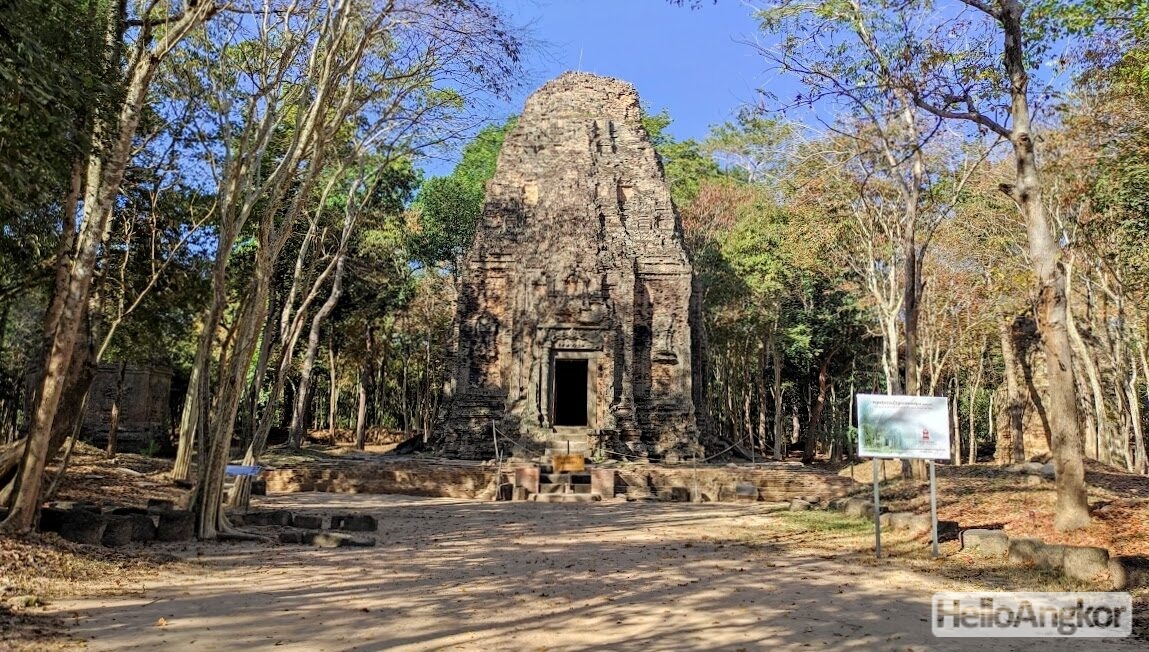Prasat Yeay Poan or Yeai Poeun, also recorded as S Group, is an enclosed complex of temples and one of the three main temple groups alongside Prasat Tao (C Group) and Prasat Sambor (N Group) at Sambor Prei Kuk. Inscriptions reveal that the temple group was built during the reign of King Isanavarman I (616-637 AD) at around the same time as Prasat Sambor. Inside its double enclosures are some 15 temples with the grand central shrine at its center.
Its outer wall, constructed of laterite blocks much smaller than those we’d see used in later eras, is around 250m a side with entrance gopura (pavilion) on the east and west, along with false entrances on the north and south. Inside this outer enclosure are the ruins of several small shrines with those on the east side retaining some detail of their basement structure, there’s also a stunning and ornate round pedestal presented here.
The second enclosure is around 160m aside, constructed of brick with sandstone features having entrance gopura at each cardinal point with the east and west in the best-preserved state having been restored in recent times. Here, seen on the western wall on either side of the gopura, are one of the highlights of the complex another unique feature of the art at Sambor Prei Kuk with large round medallions adorning either side of the wall. The medallions depict mythical scenes not yet decoded and further insight may come as other sections of the wall are excavated and restored. Much smaller medallions with inset figures are commonplace in lintels of the time and ubiquitous across decorative bands in temples of the later 12-13th c Angkorian era sites, yet their grand scale, presentation, and implementation seen here are unique to this site.
Inside the enclosure is a phenomenal ensemble of temples, including five octagonal temples and a square temple or mandapa preceding the monumental central shrine.
Outer enclosure – On the eastern side are remains of the outer wall, a partially standing shrine (S17-1) just south of the main causeway along with an ornate round pedestal possibly from the gopura of the next and inner enclosure.
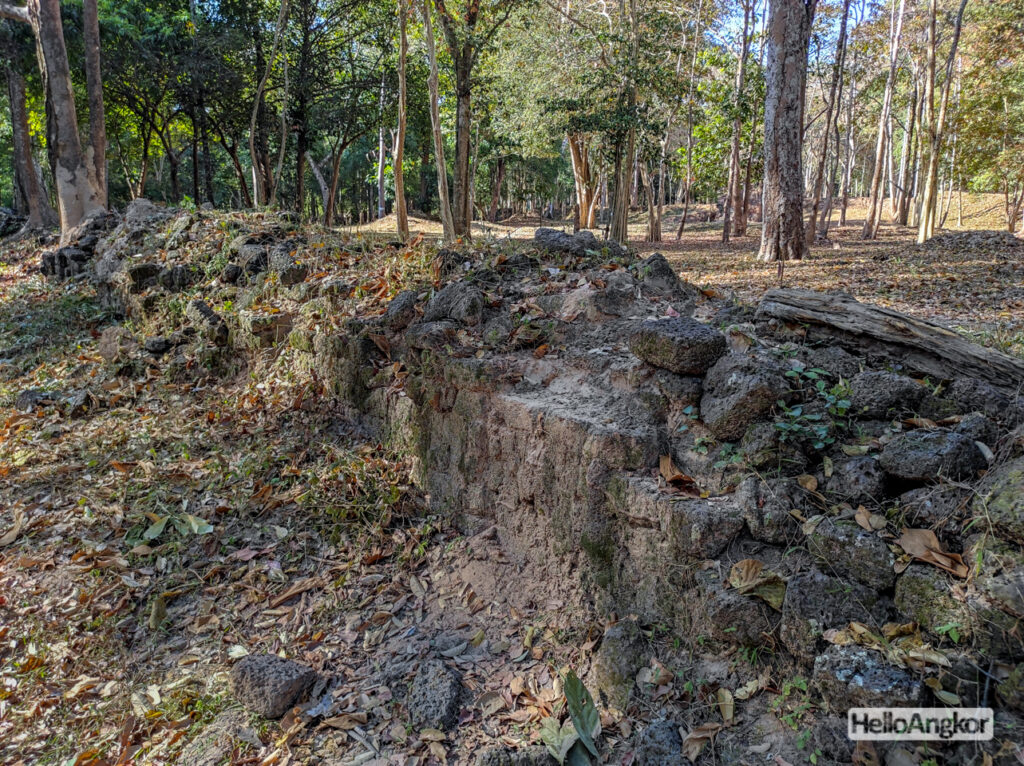
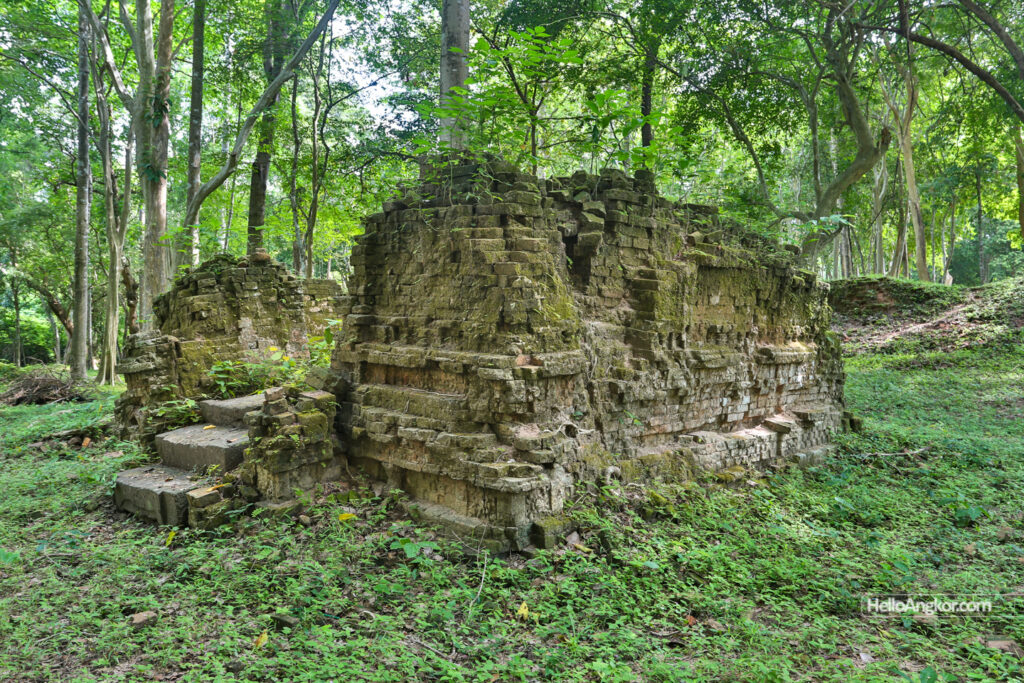
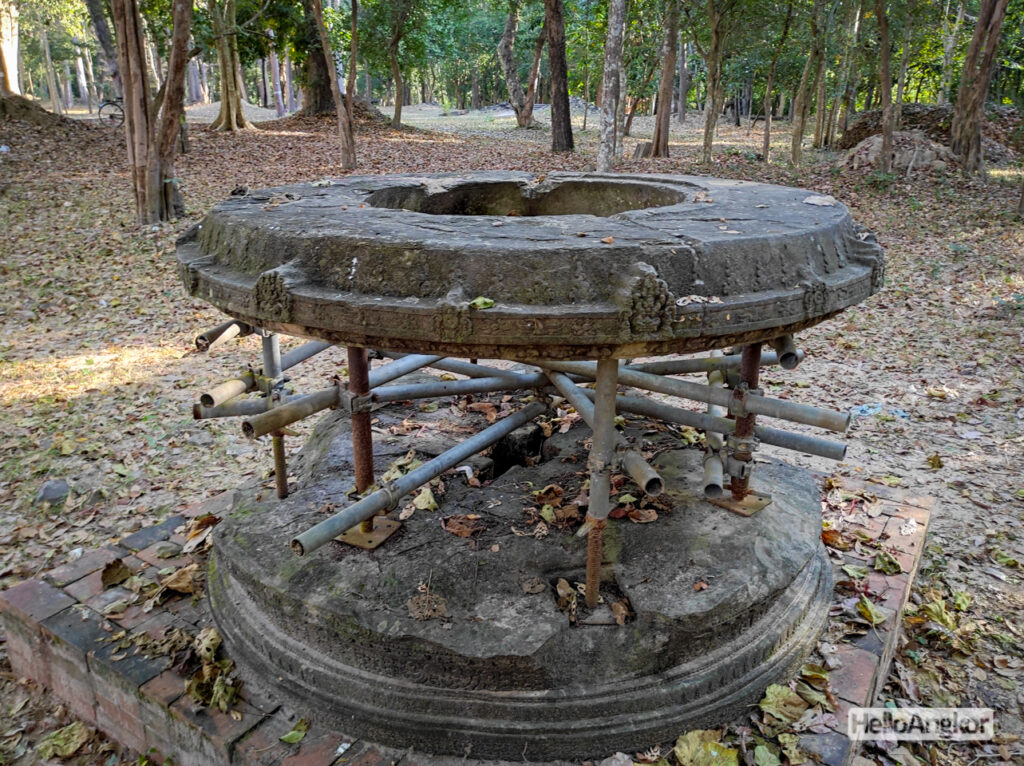
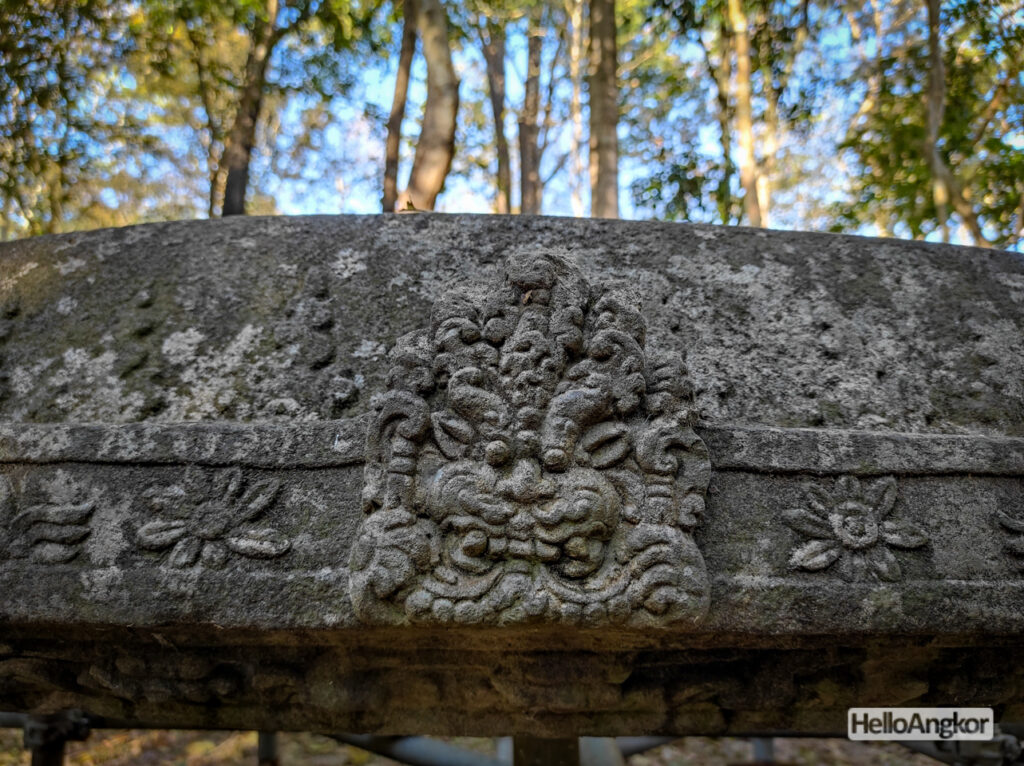
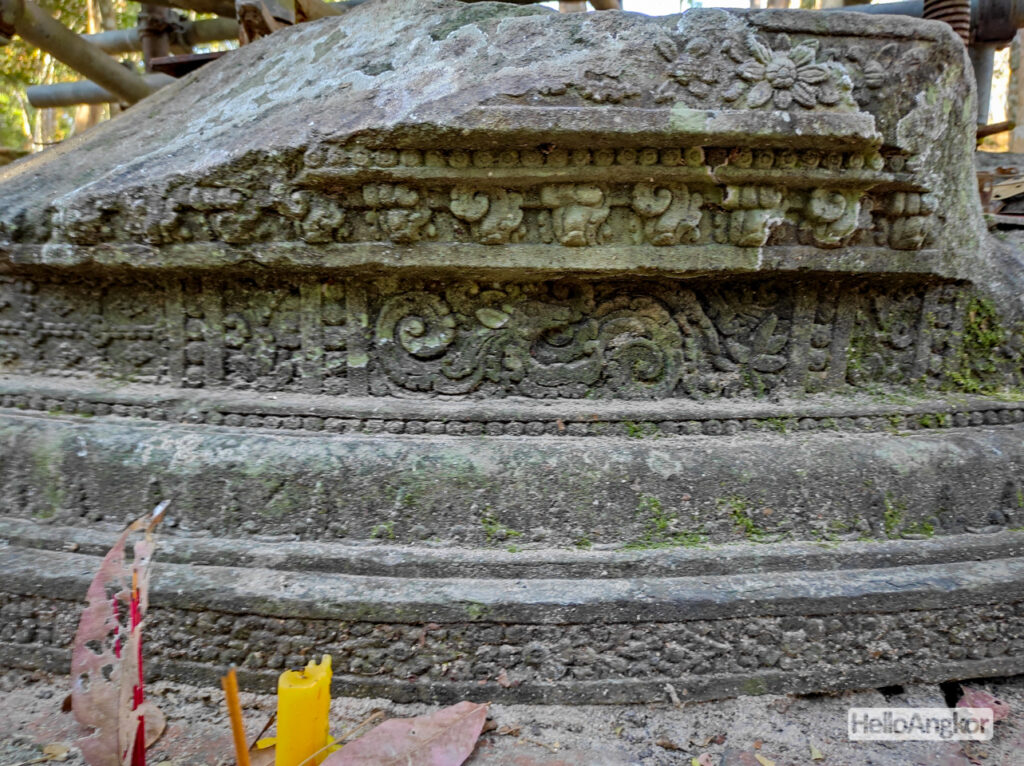
Inner enclosure – East Gopura, South Gopura, West Gopura, inner enclosure, and medallions of the west wall. These gopura were seemingly more than just simply entrances, they are quite large and their outer walls show remnants of flying palace reliefs.

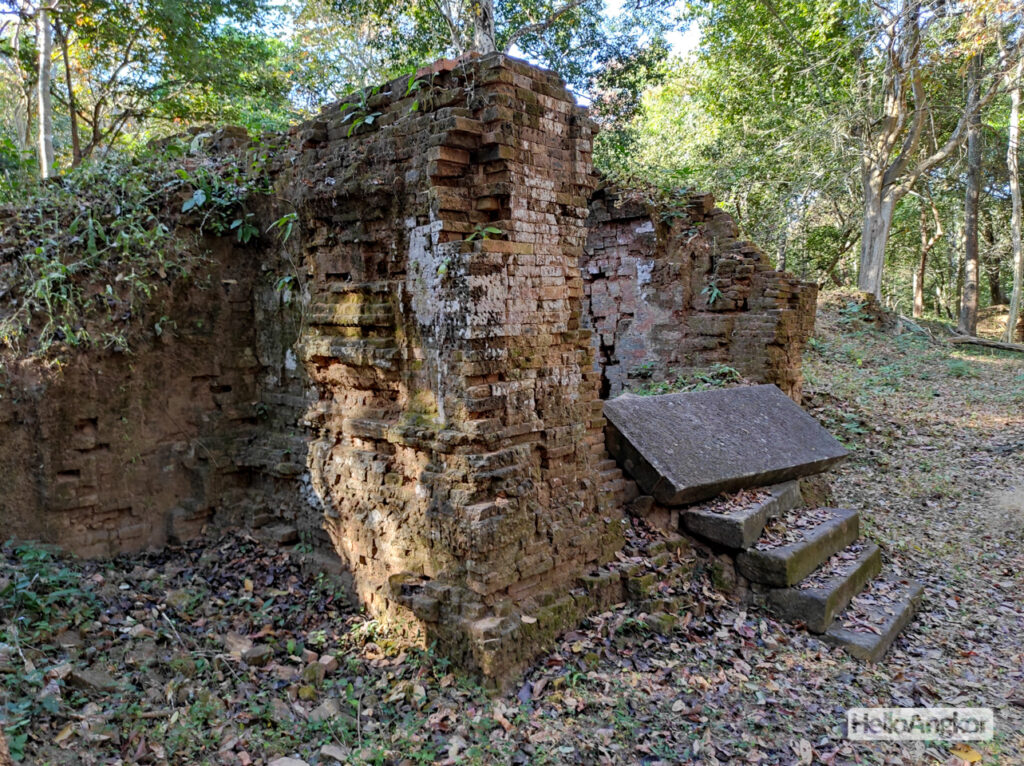

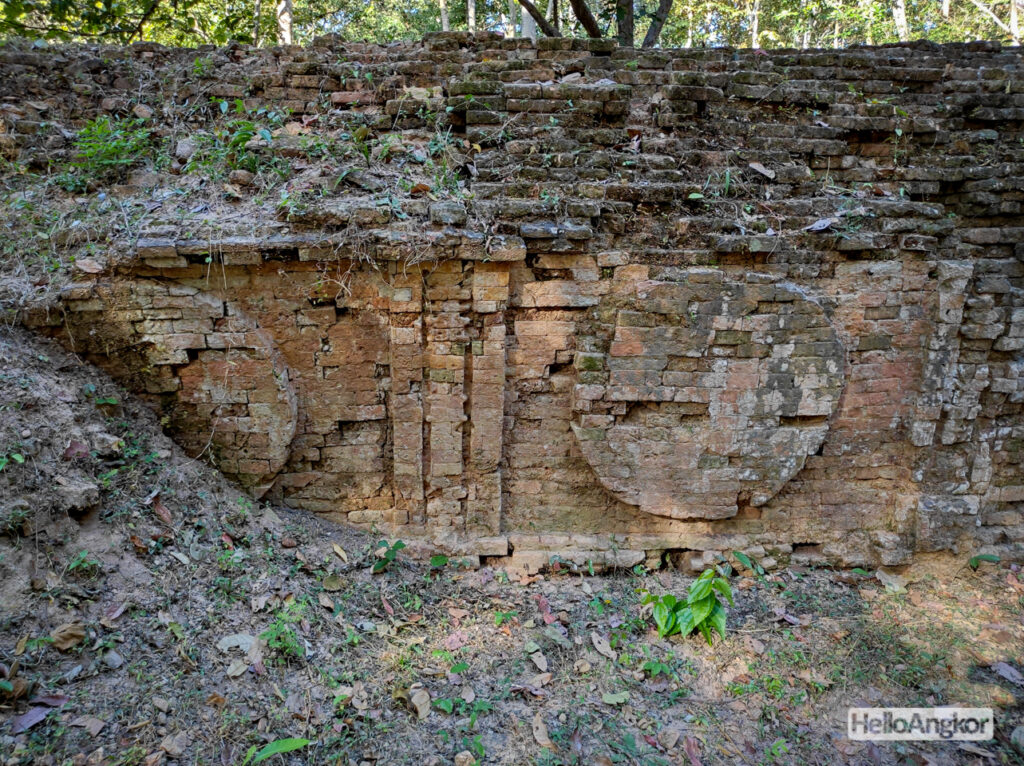
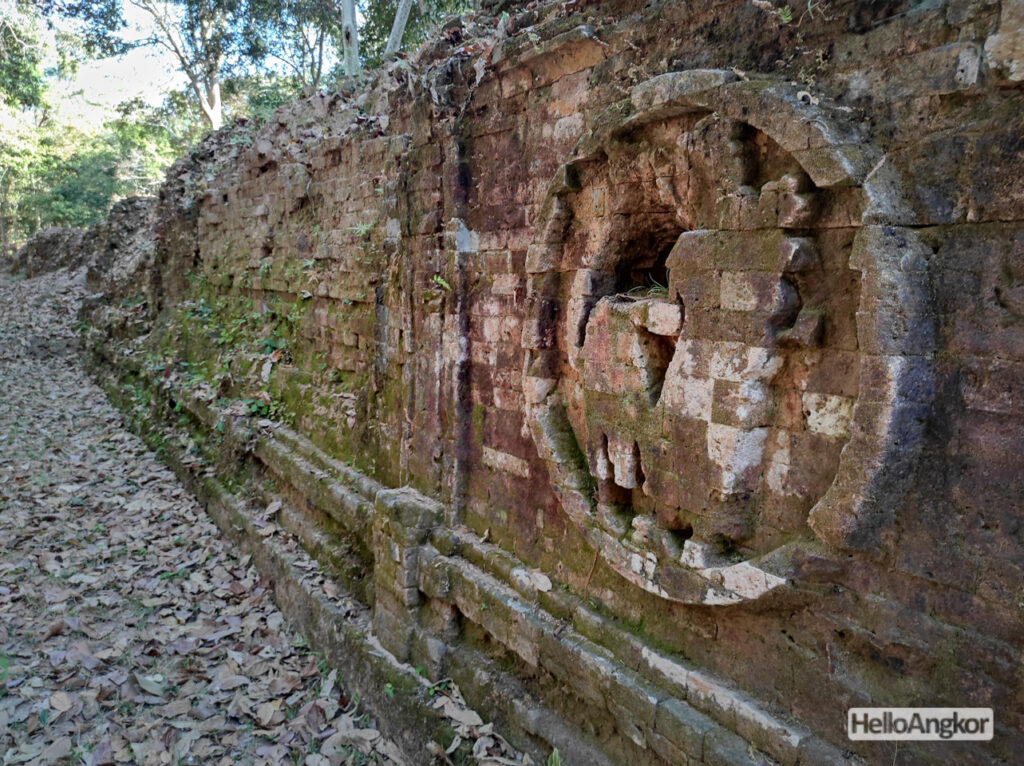

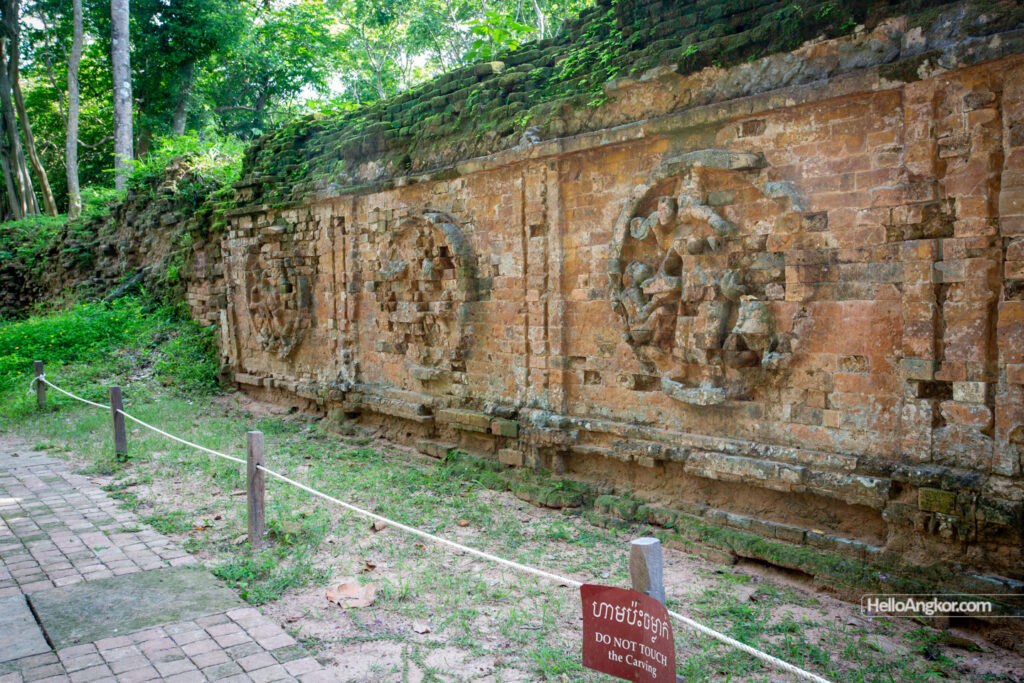

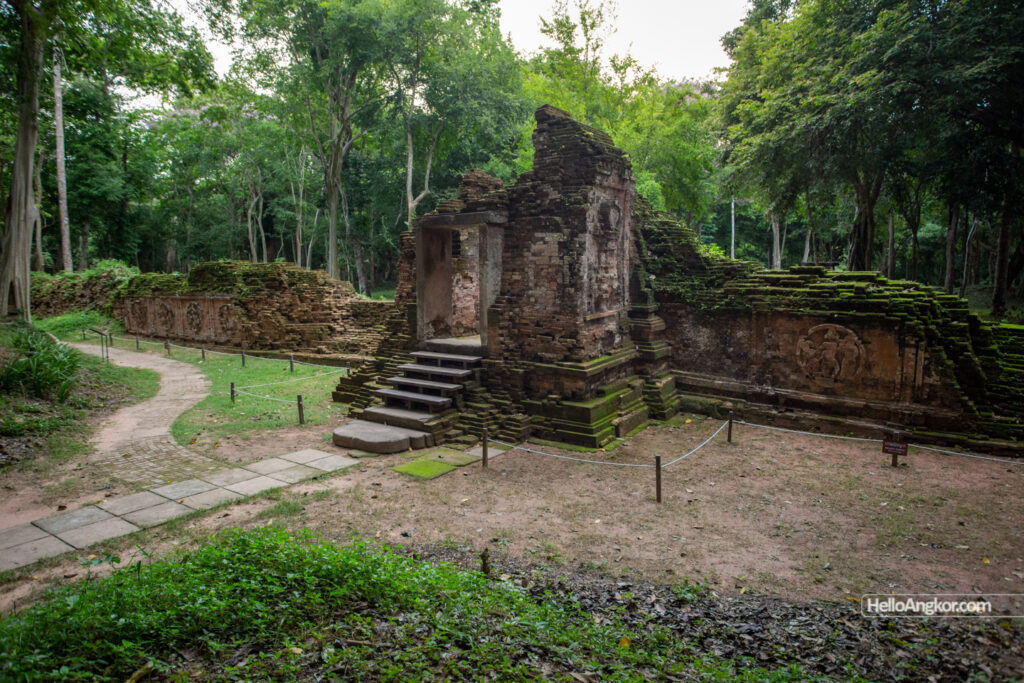
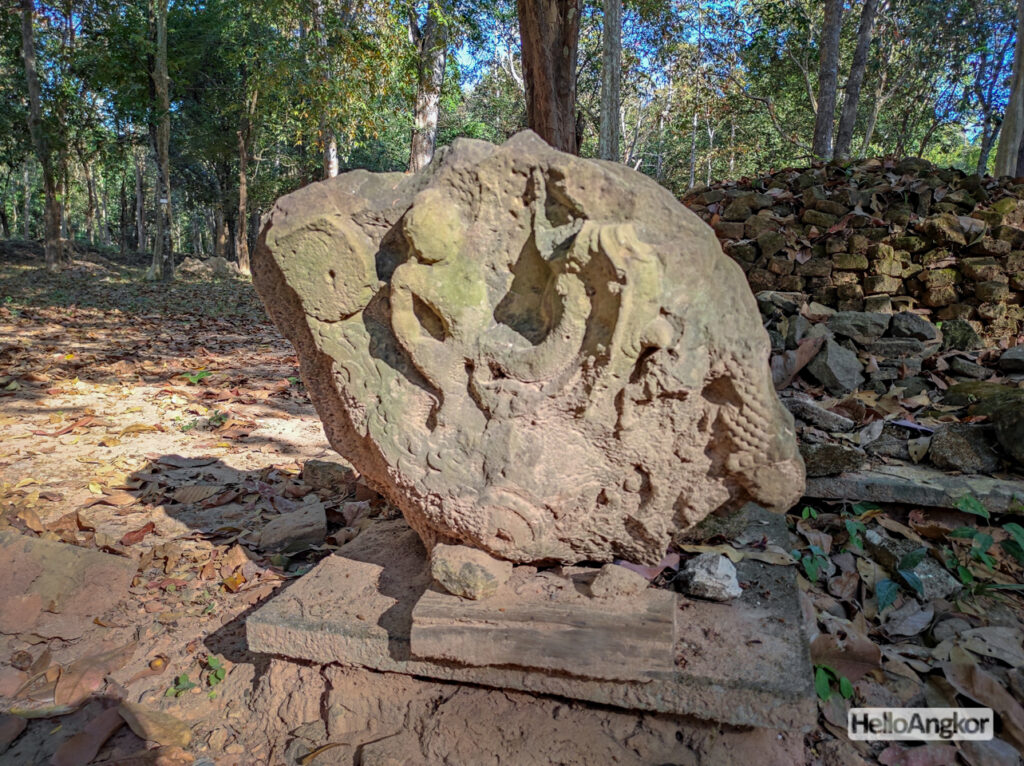
S2 – remains of a tall brick temple, or mandapa, that featured a cell formed by a sandstone slab raised by sandstone pillars once housing a sculpture of Nandi (the sacred bull). The pillars are ornately decorated with floral patterns while the horizontal slab features niches with depictions of faces some say have a likeness to Gandhara art or art of the Gupta period. In Indian art, the surrounding arch is called a gavaksha (or kudu) which symbolically creates a window for the deity of the temple to look out upon the world. Hamsa, the mythical bird, is also seen decorating the slab. On the basement slab, a short inscription is carved which was registered under K. 442.
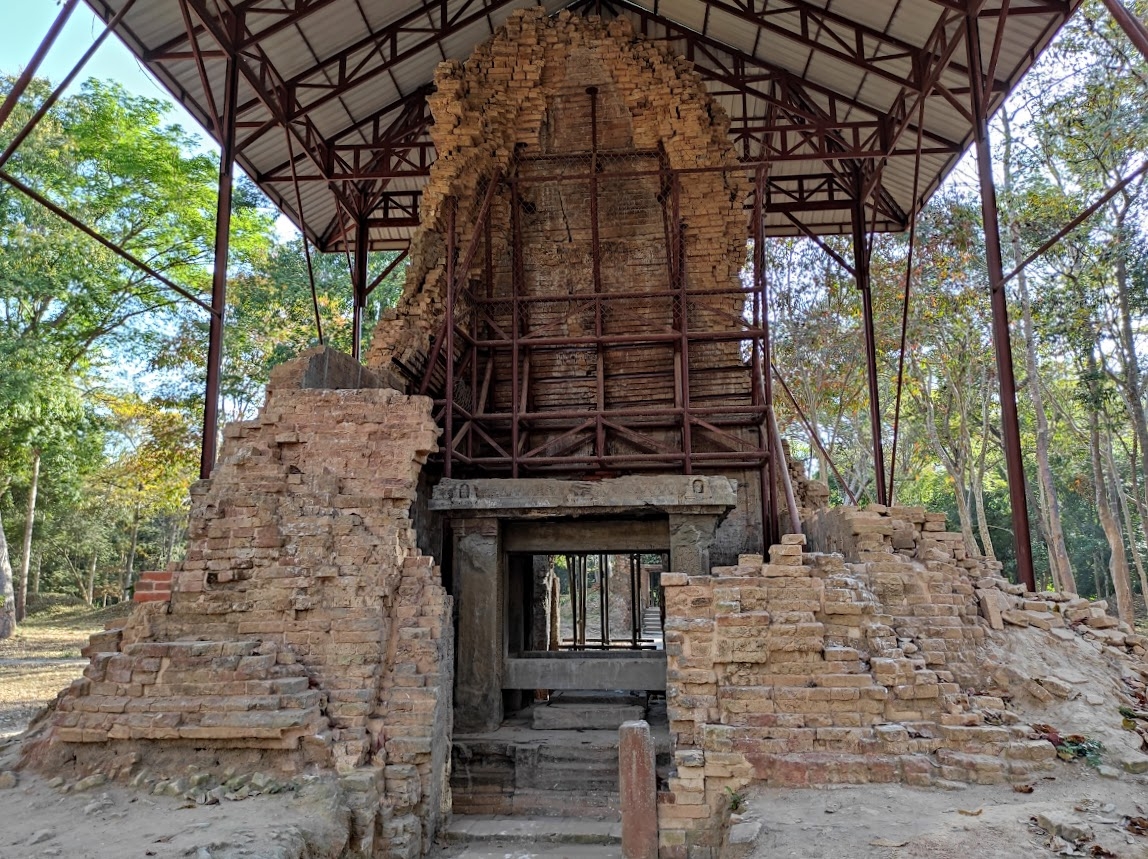
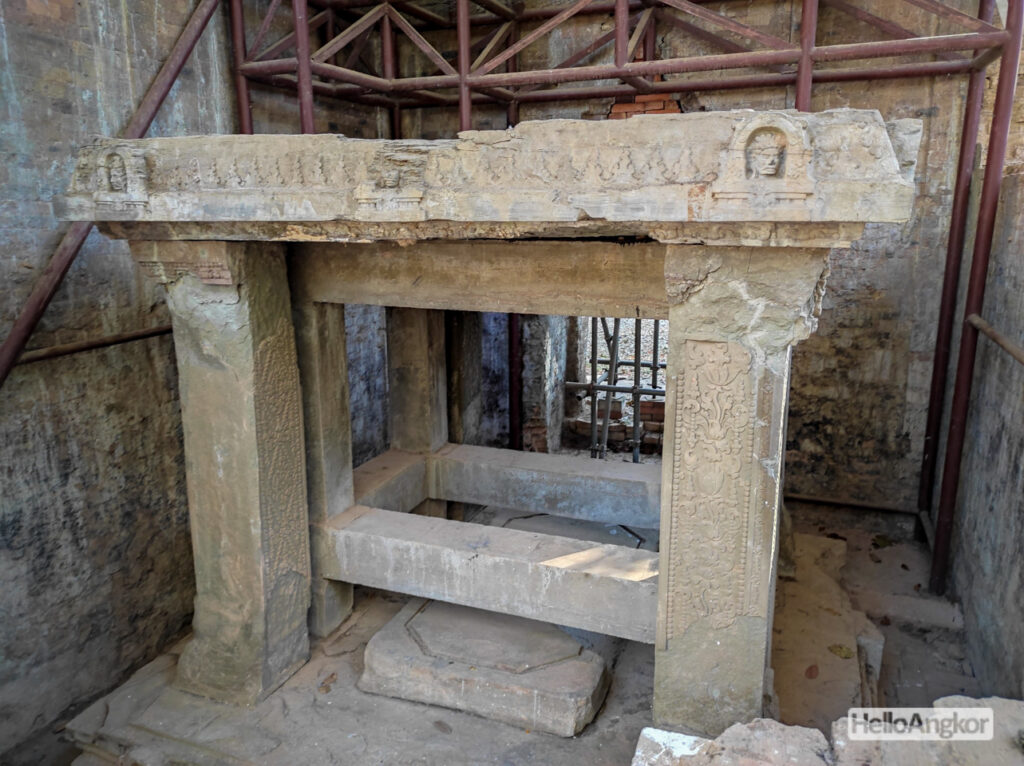
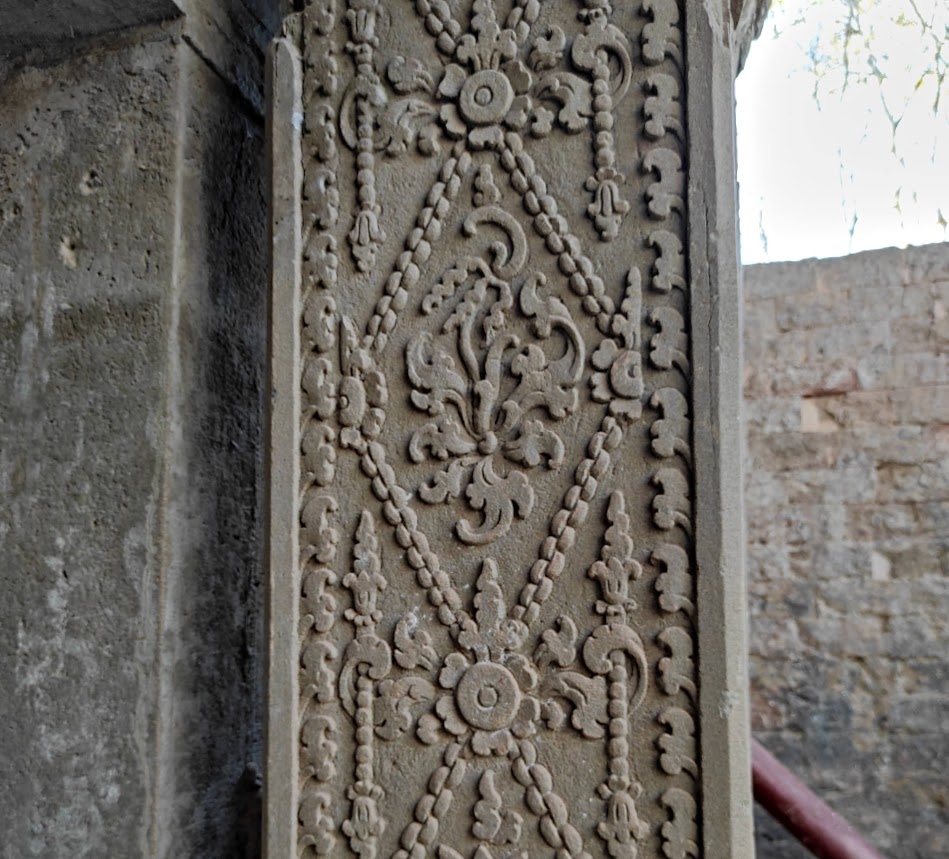
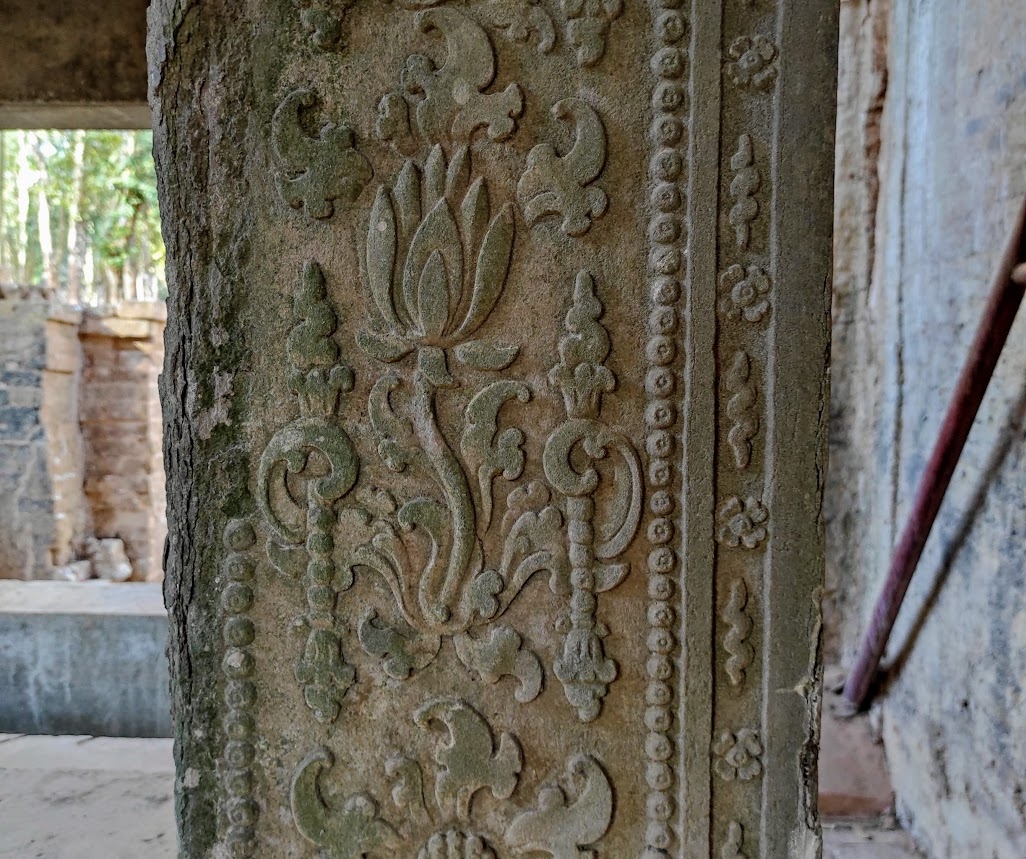
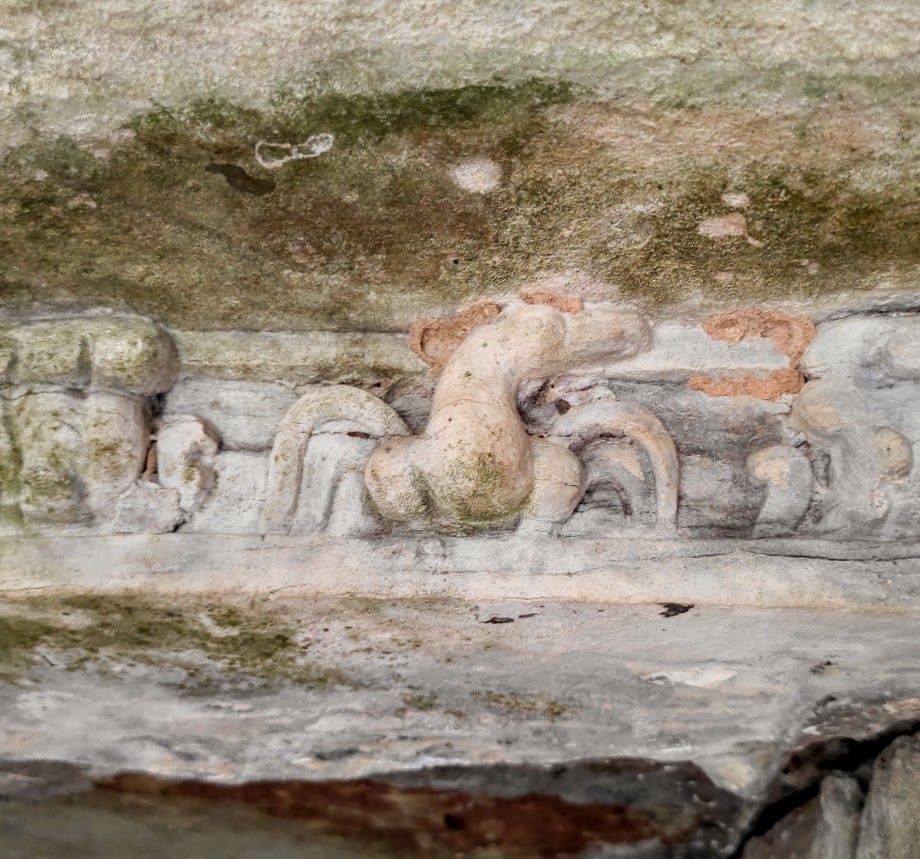

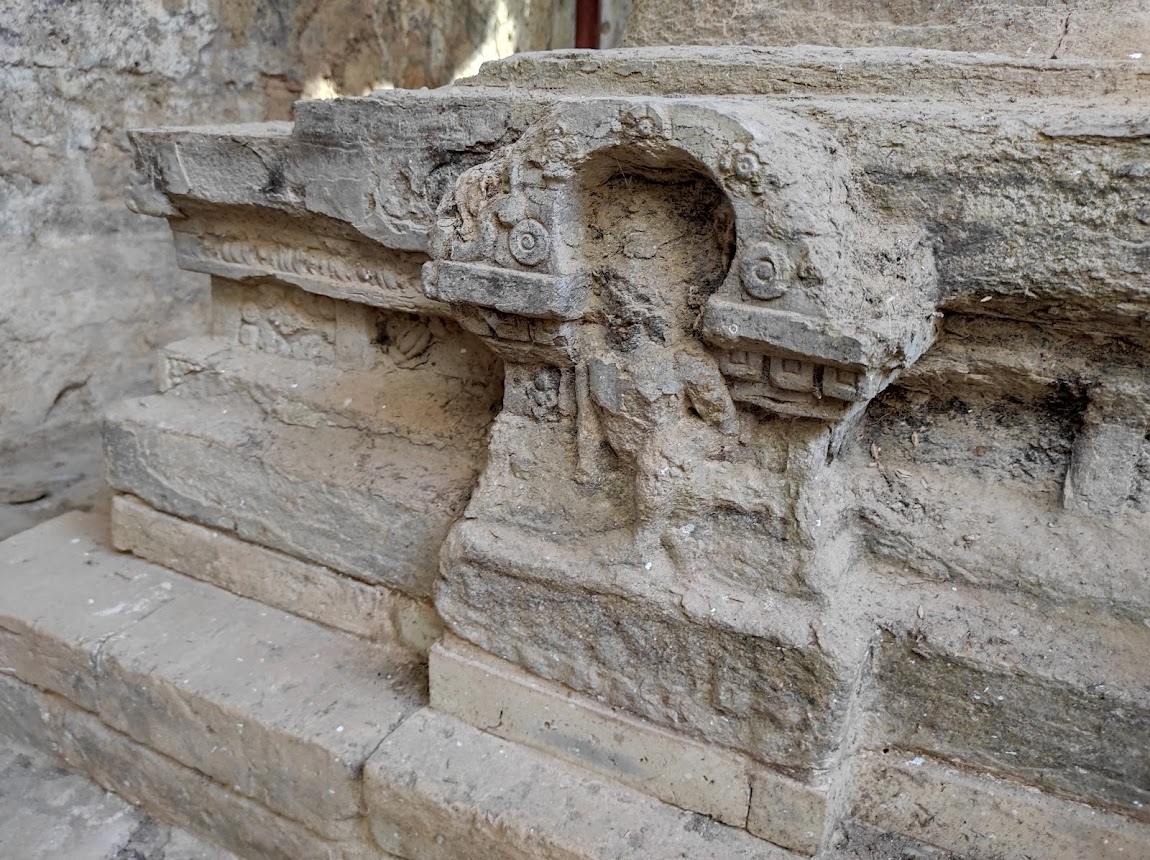
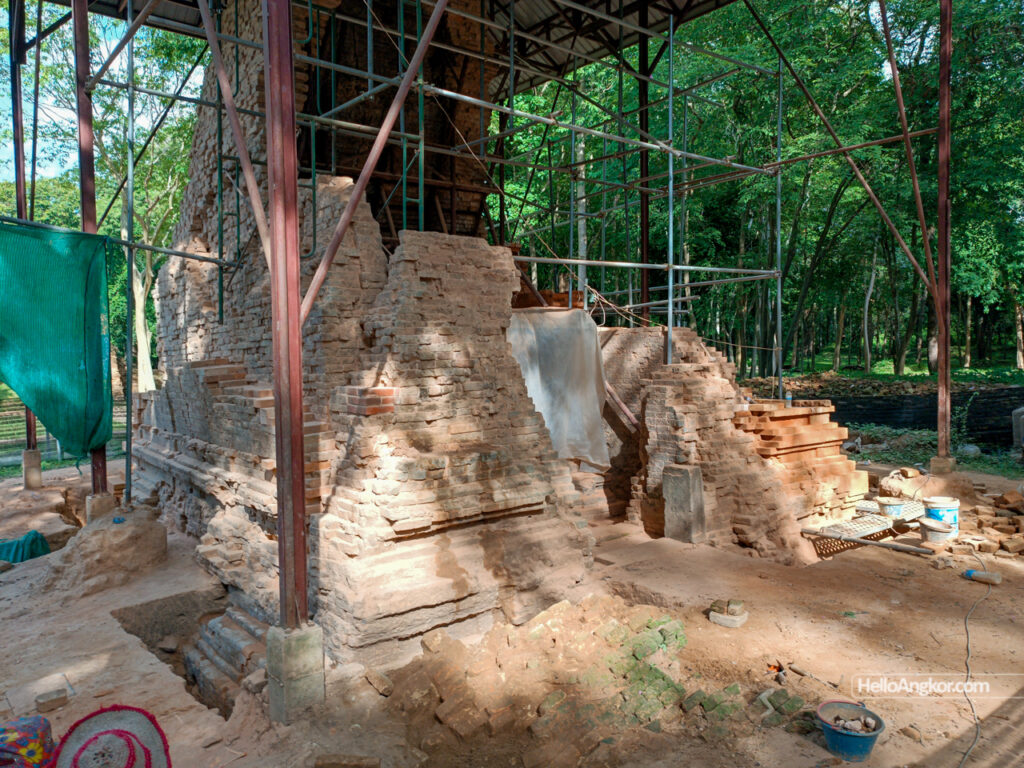
S1 – the central temple of Yeay Poan. Rising 25 m, the rectangular brick tower features an entrance to the east with a sandstone doorframe flanked by round decorated columns and topped by lintel depicting Indra on Airvata. Around its exterior walls, bas-reliefs of flying palaces flank the doorway and doubled either side of the false doors on the side walls. In the upper registers, detailed relief work can still be seen, in particular a wonderfully preserved image of a male figure inquiring with a female figure who would seem quite suspicious of his intent. During 2022 visit and in March 2023, the site was in the midst of ongoing restoration works.
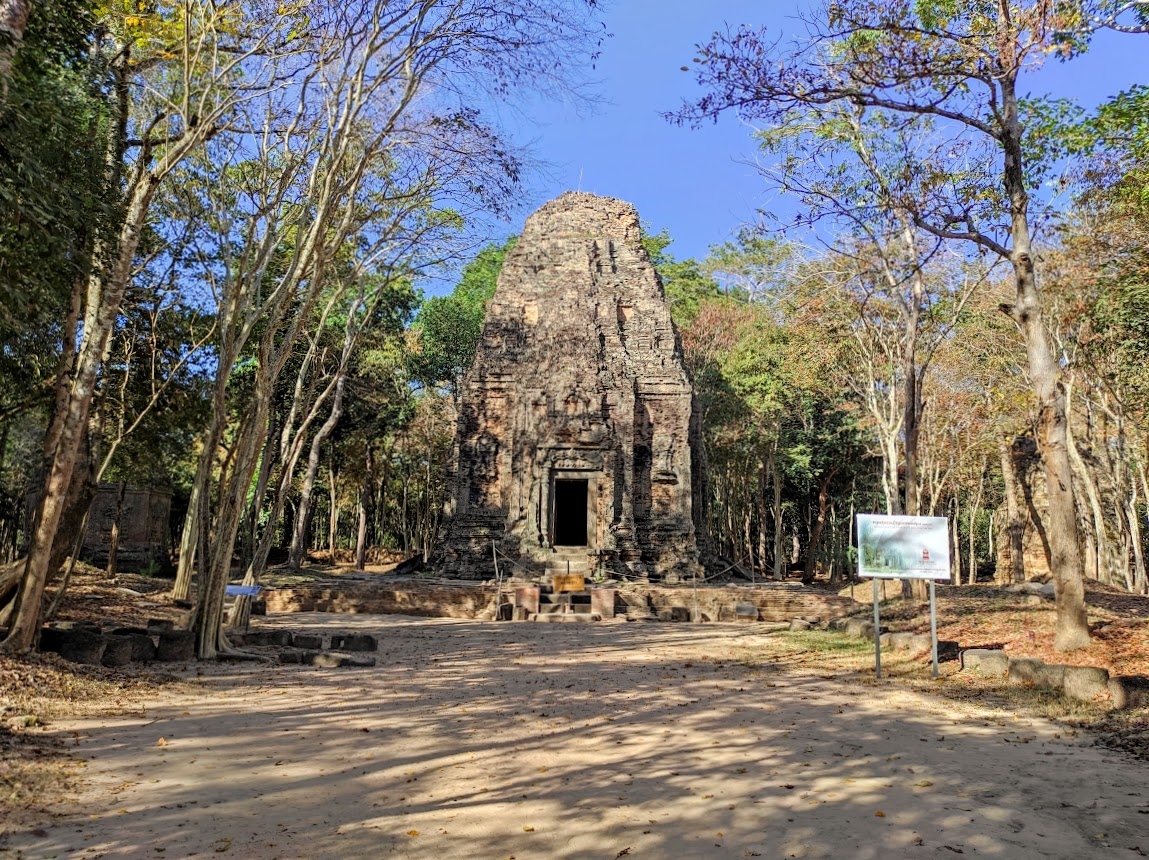
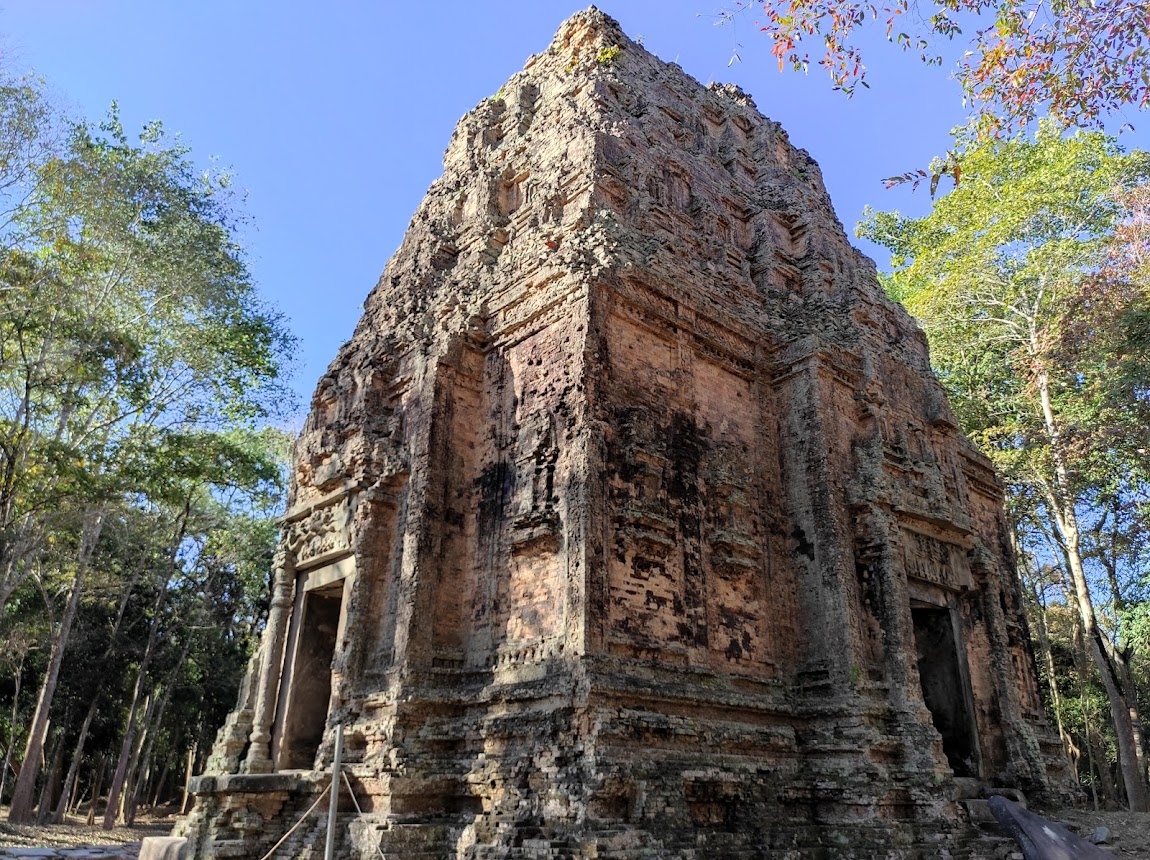
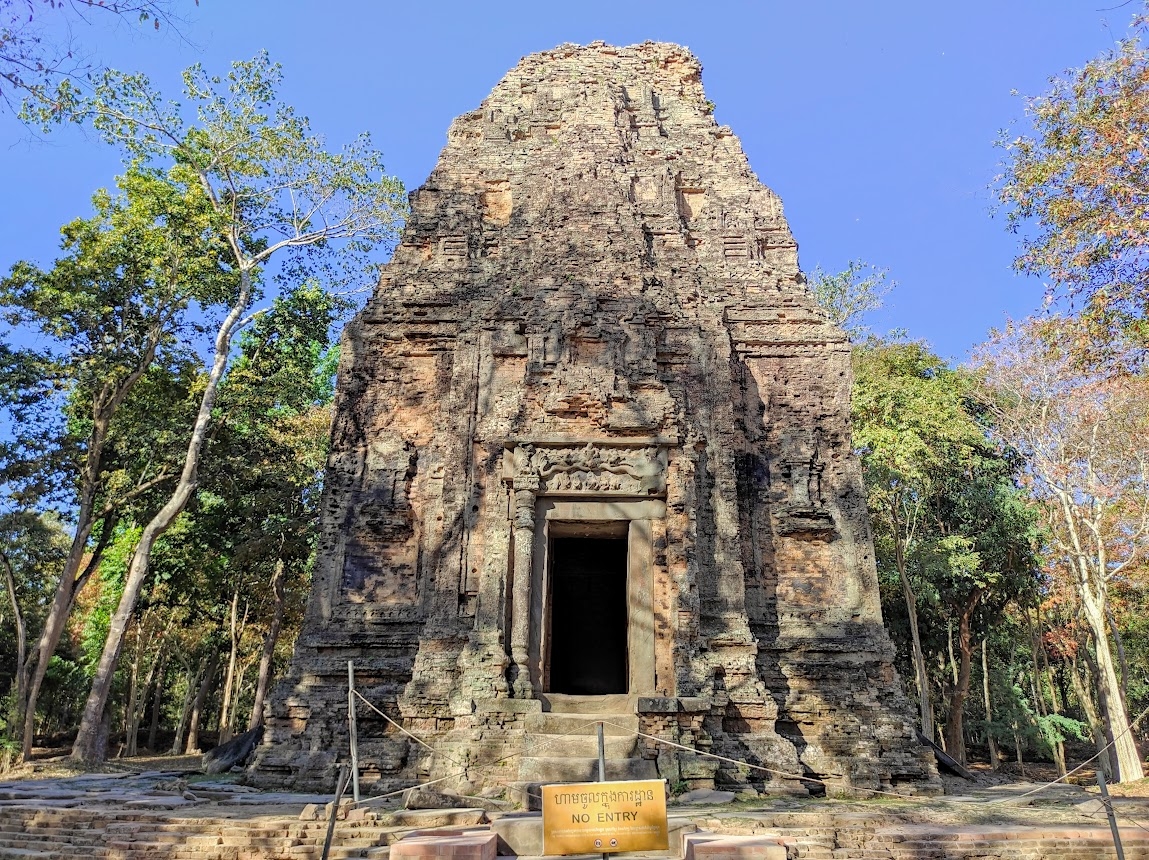
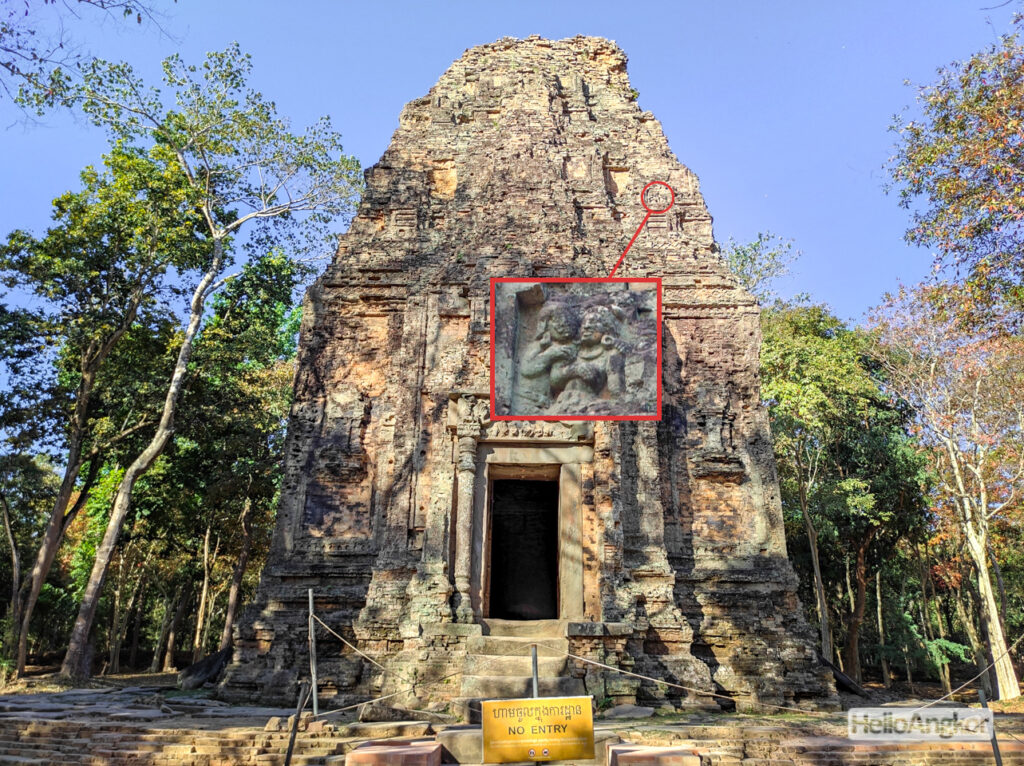
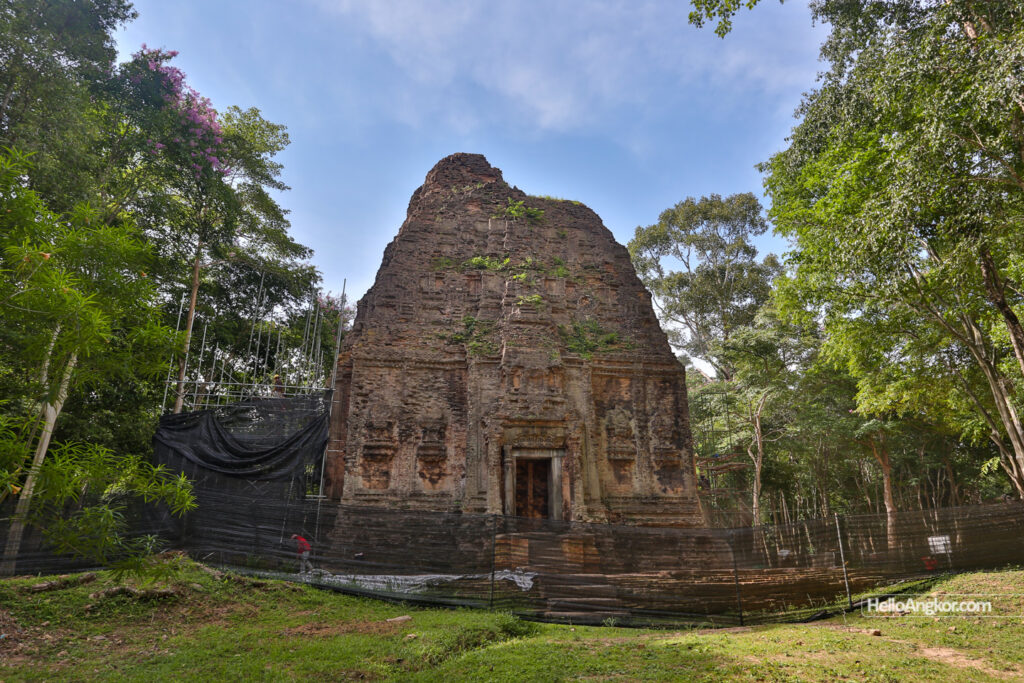
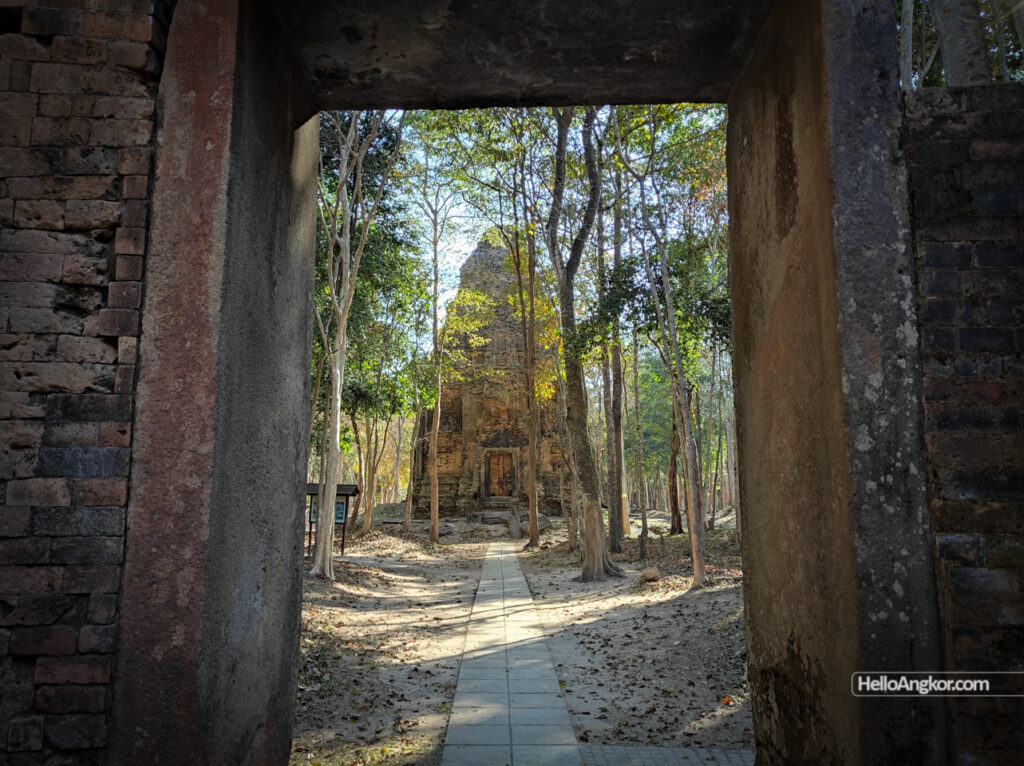
S7 – octagonal brick temple with flying palaces adorning its sides
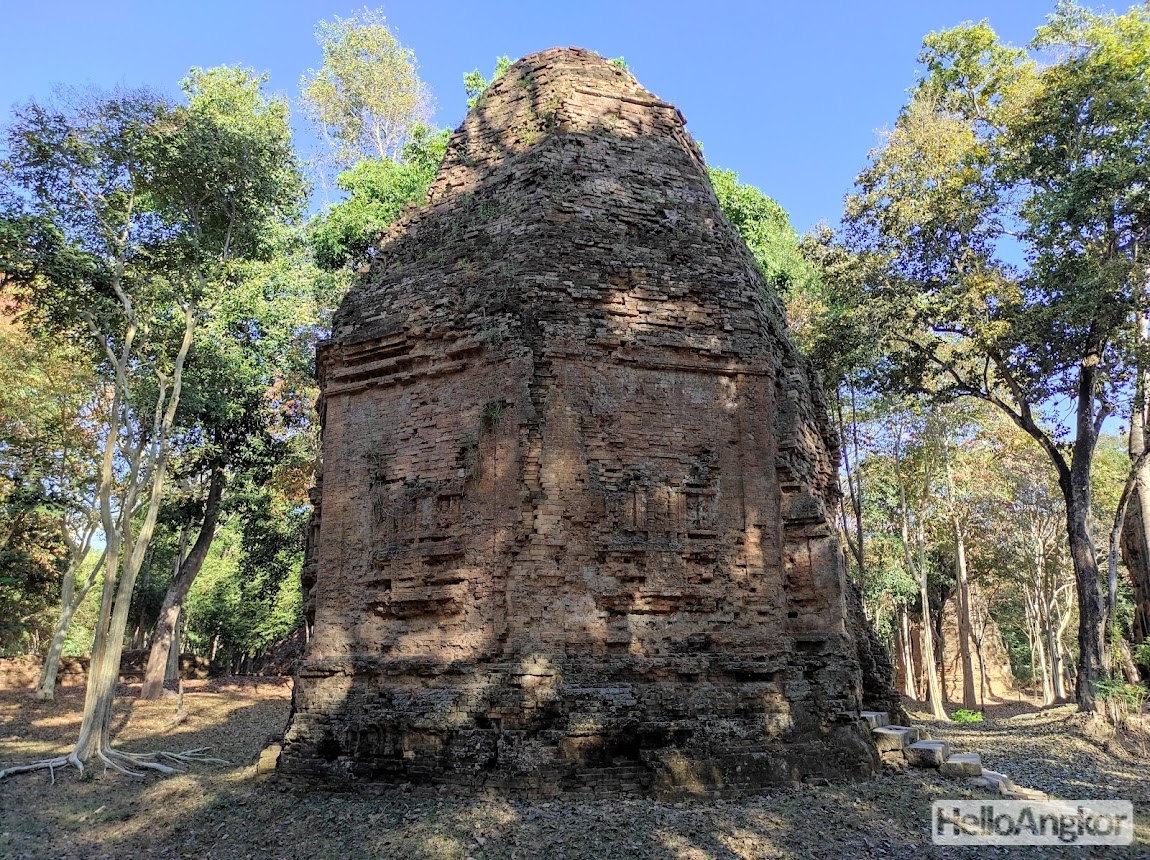

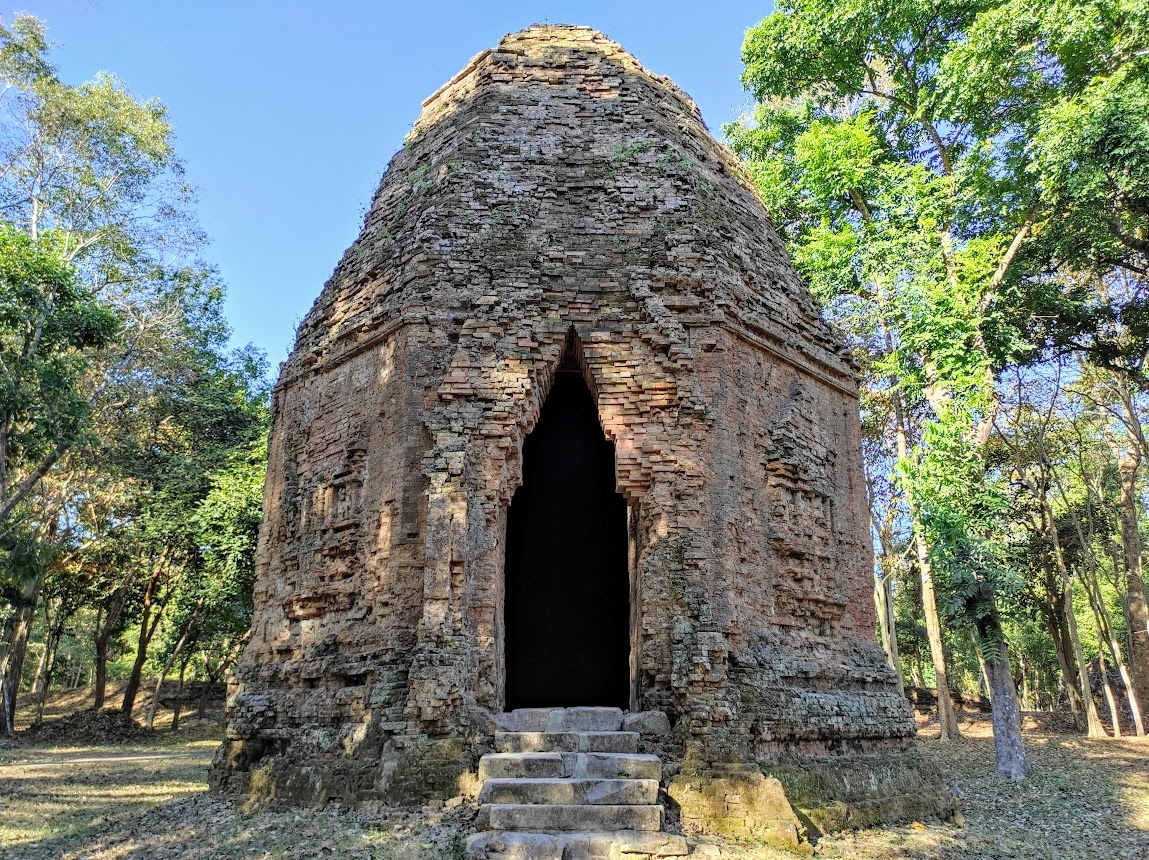
S8 – Remains of an octagonal temple once again adorned with flying palaces.
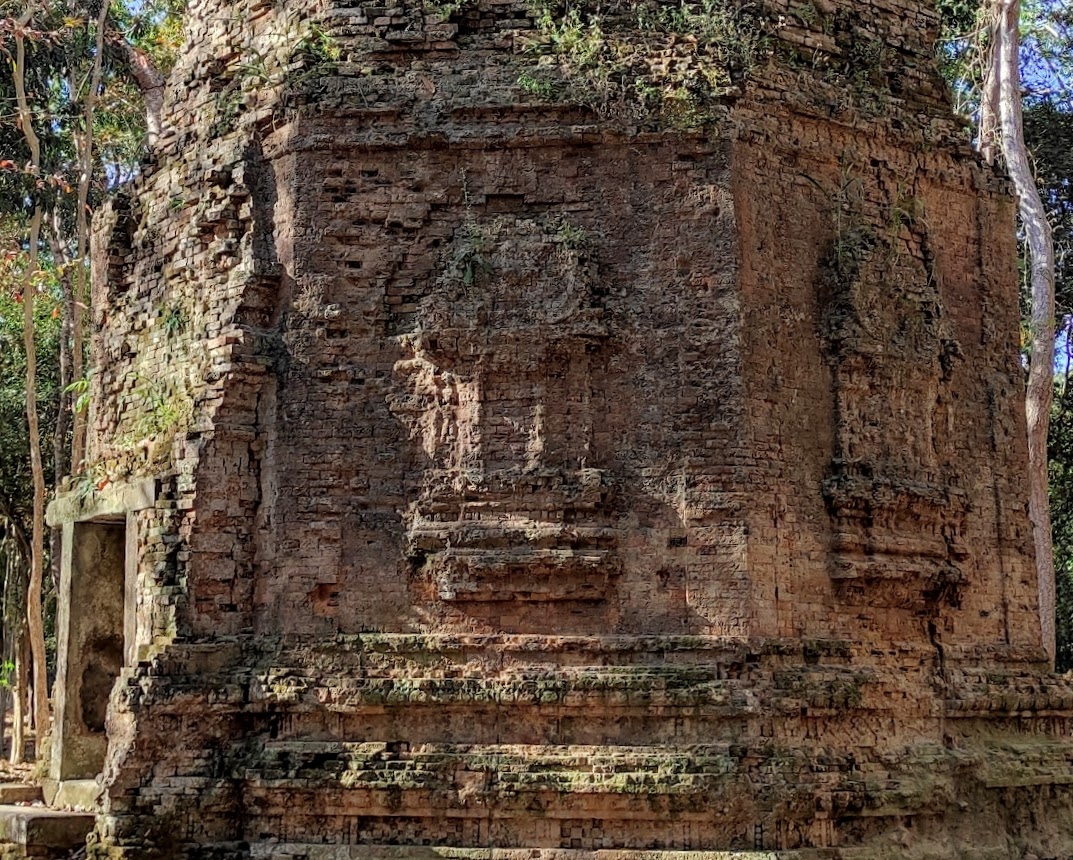
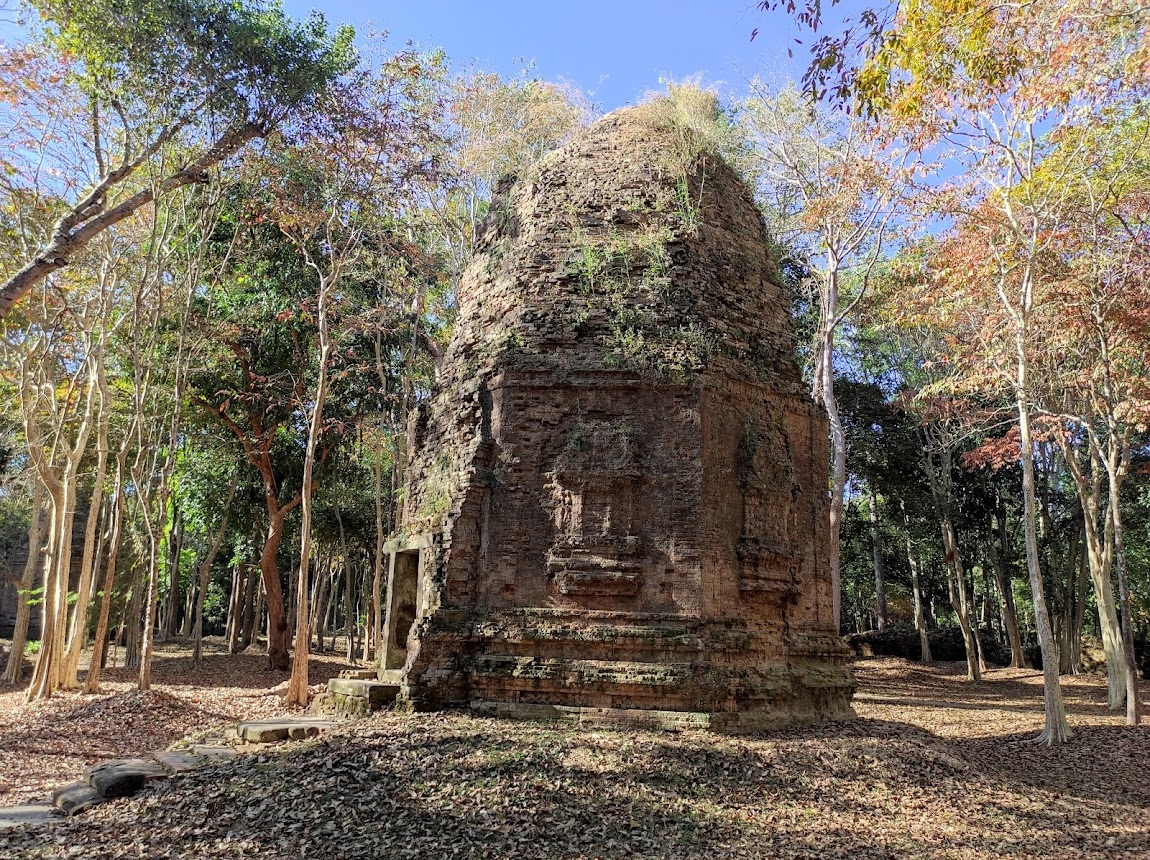
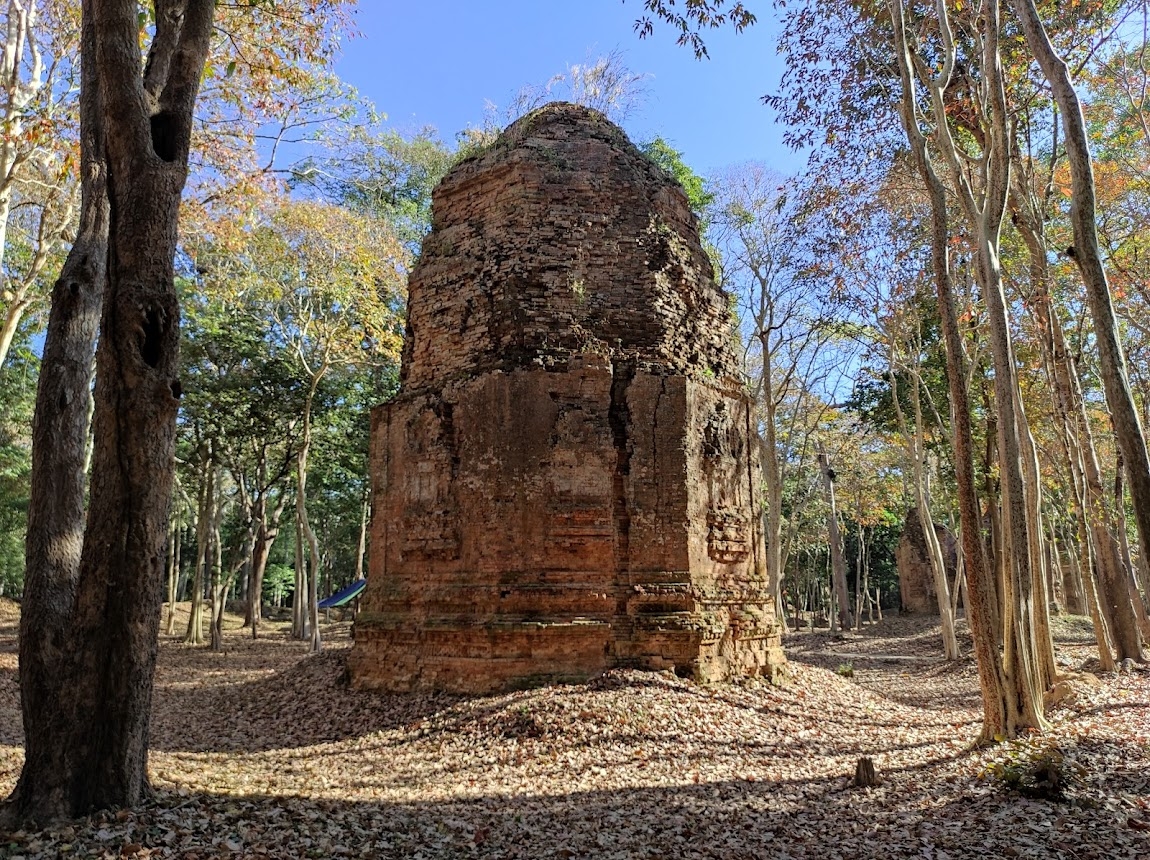
S9 – Remains of an octagonal temple once again adorned with flying palaces.
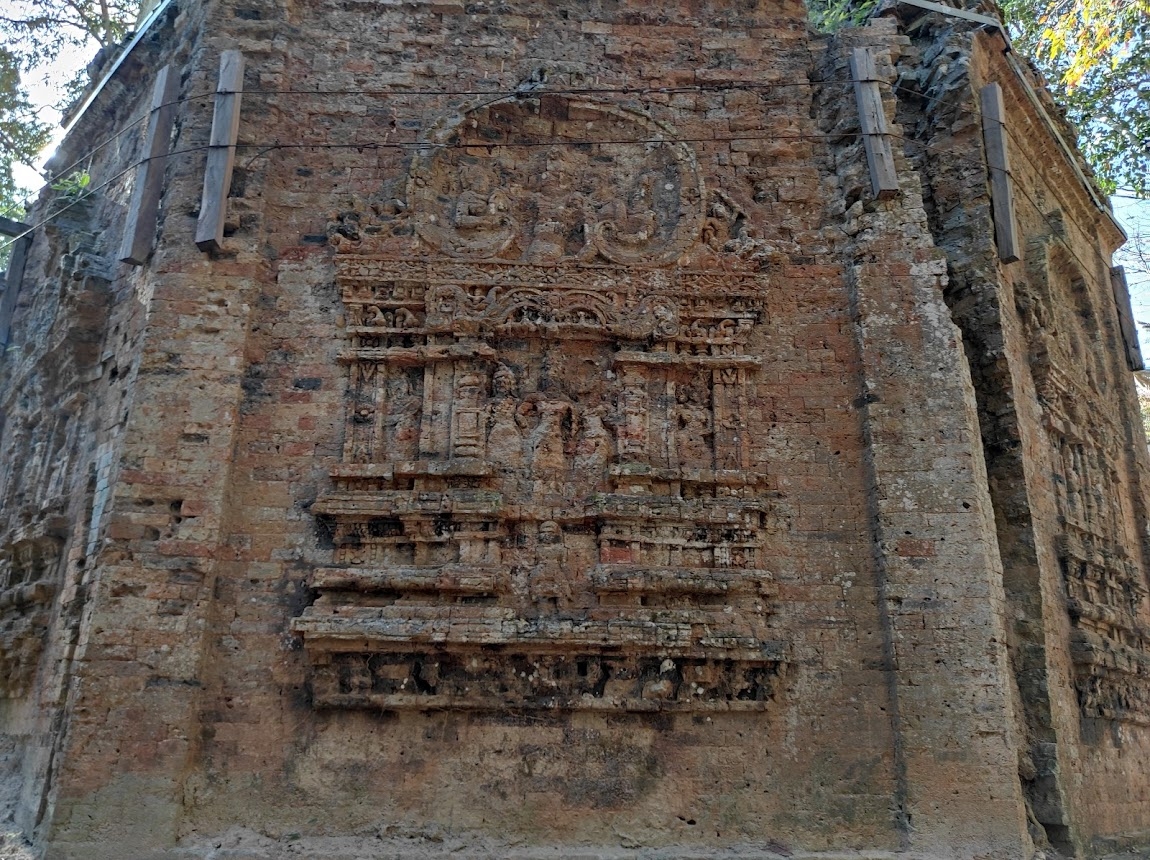
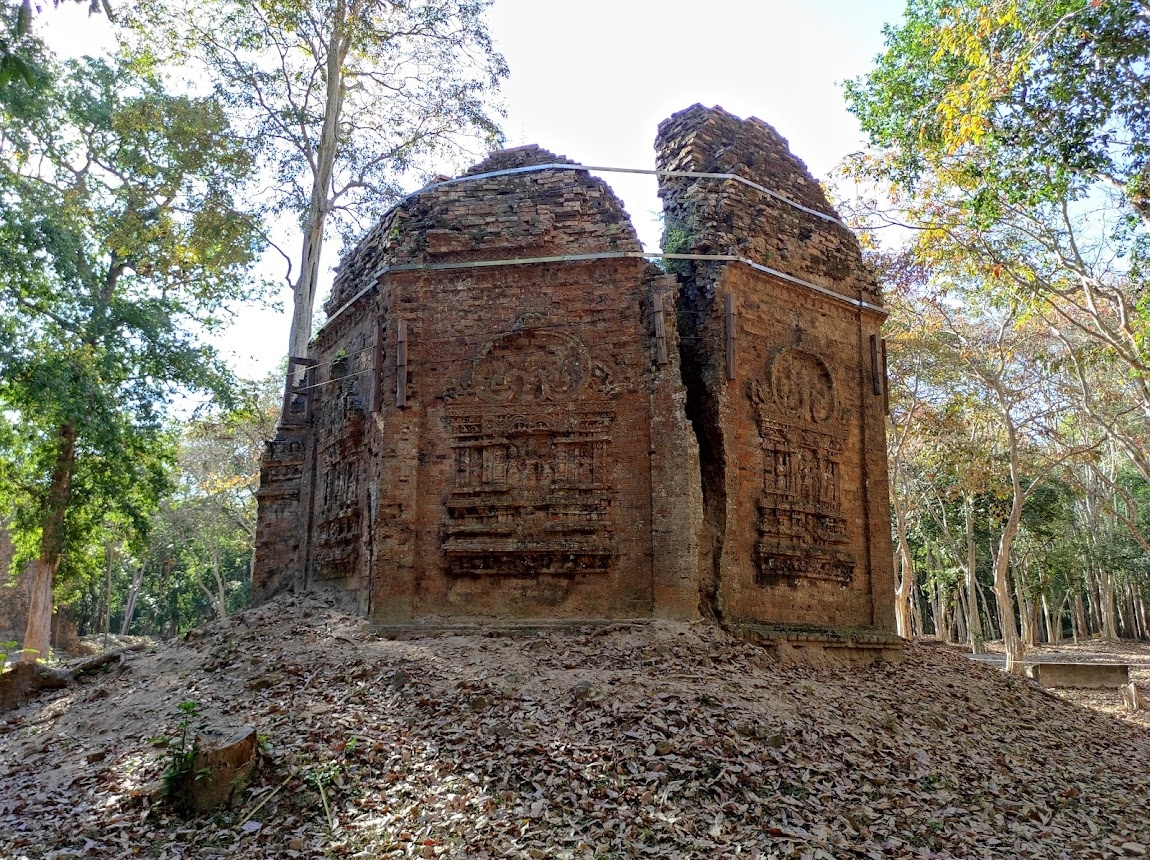
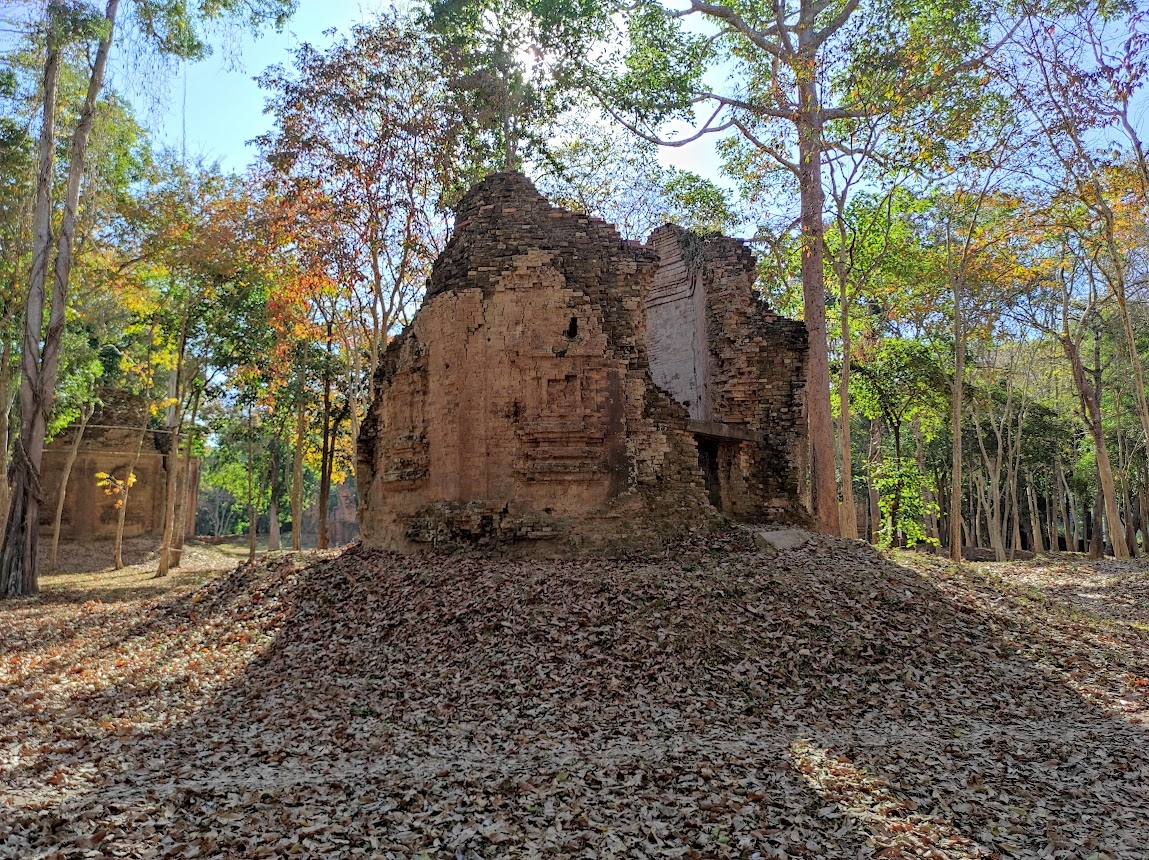
S10 – Remains of an octagonal temple once again adorned with flying palaces.
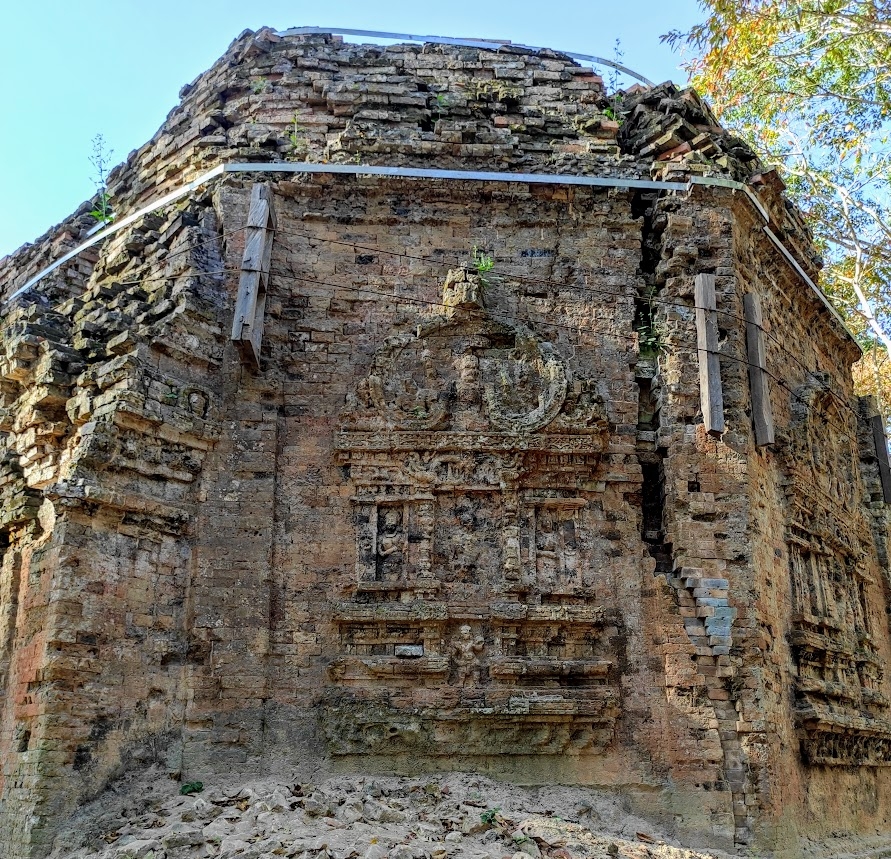


S 11 – an octagonal brick tower featuring the artistic reliefs of “flying palaces”, the characters of which are unknown at this time while Persian, Parthian, or Sasanian influences are suspected. It has the remnants of a forebody that extended its opening and inside, features a round pedestal.



Inscriptions
Via CIK
- K. 440 – 17 lines of Sanskrit – IC IV, p. 5
- K. 441 – west gopura – 6 lines of Sanskrit – IC IV, p. 14
- K. 442 – S2 – 3 + 1 lines of Sanskrit – IC IV, p. 11
- K. 604 – 30 lines of Sanskrit – IC IV, p. 17
- K. 607 – before S1 – stele – Multiple lines of Khmer from stele fragments – Soutif 2009, p. 411-415
- K. 608 – entry S1/S2 – stele – 6 lines of Khmer from fragment – Soutif 2009, p. 411
- K. 609 – tank – 1 line sanskrit – Finot 1928, p. 43
- K. 610 – alter – 2 characters – Finot 1928, p. 43
- K. 611 – alter – 2 characters – Finot 1928, p. 43
- K. 612 – alter – 1 character
Map
Site Info
- Site Name: Yeay Poan (Pr.) Khmer Name: បា្រសាទយាយព័ន្ធ
- Reference ID: HA11491 | Posted: January 18, 2021 | Last Update: February 28th, 2022
- Other Names: Prasat Yeai Poeun, S Group
- Tags/Group: pr, ra, Sambor Prei Kuk, T4, Temples
- Location: Kampong Thom Province > Prasat Sambour District > Sambour Commune > Sambour Village
- MoCFA ID: 201
- IK Number: 165
- Inscription Number/s: K. 440, 441, 442, 604, 607, 608, 609, 610, 611, 612, 1113

